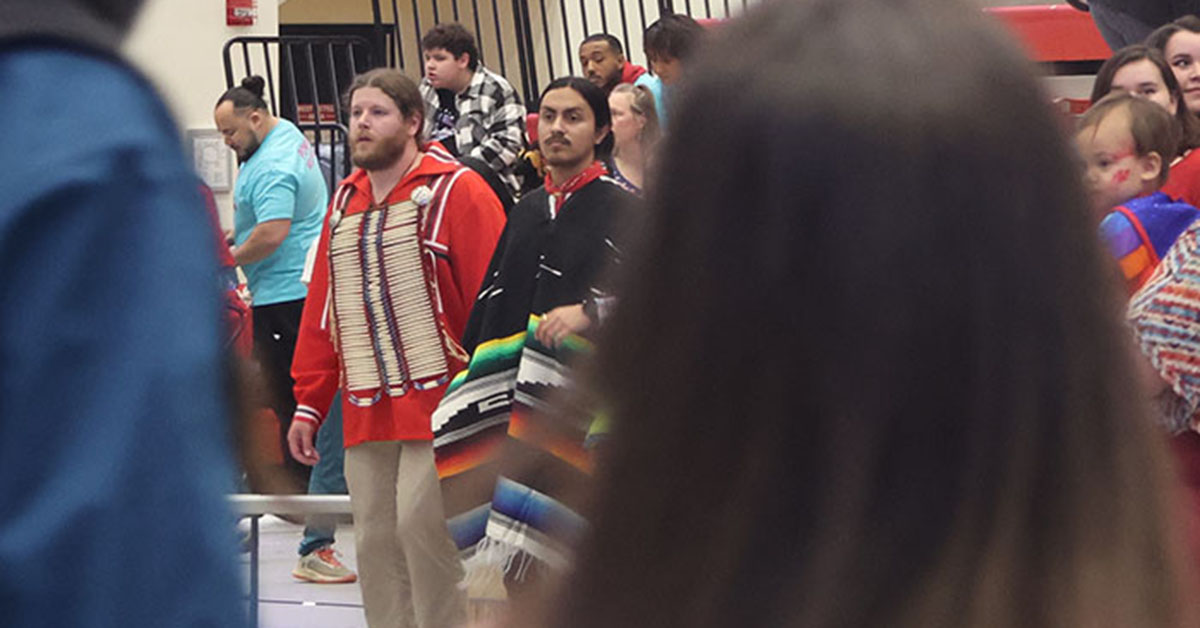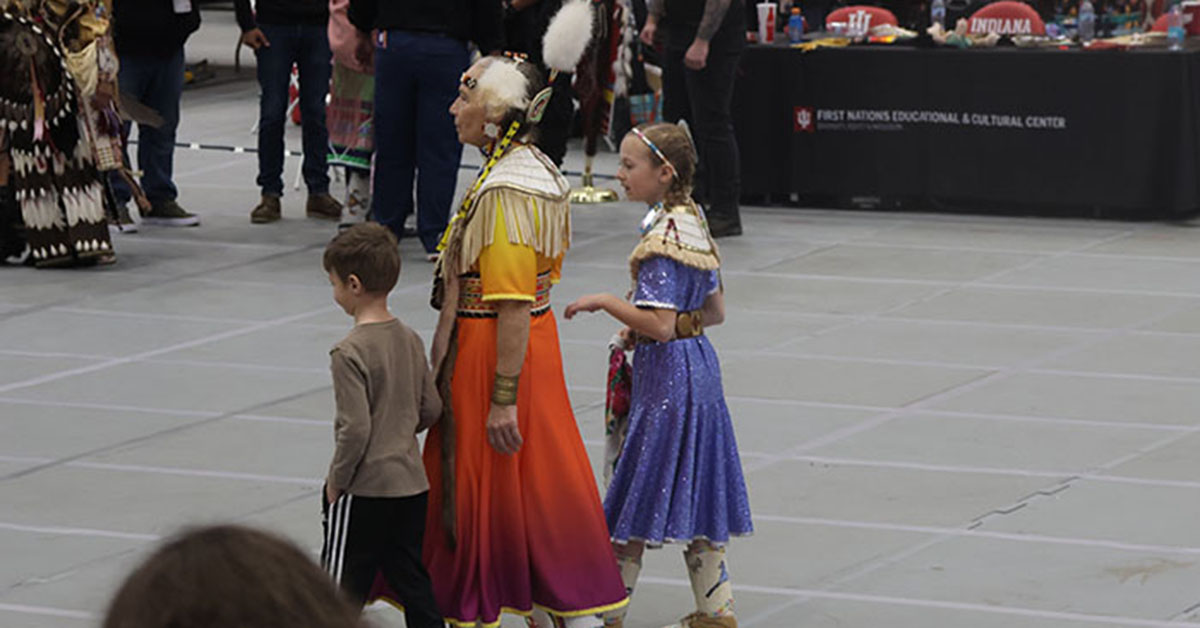BLOOMINGTON, Indiana (Apr. 15, 2025) — This past Saturday, Indiana University Bloomington’s First Nations Educational & Cultural Center (FNECC) hosted their 12th annual Powwow at Wilkinson Hall. Performers and spectators alike gathered in a lively arena from 11am to 8pm, sharing in song, dance, food and celebration of the many Indigenous cultures spread across North America. In typical Powwow fashion, dancers converged at the center of the arena and moved to live music performed by four separate drum circles, located at each corner of the gym. Merchants

stationed behind the dance floor offered colorful garbs, ornate jewelry and other hand crafted items for sale. Volunteers placed throughout the venue helped answer any questions curious attendees may have had and a registration booth was available for those with Indigenous ancestry to sign up to dance.
When attending a Powwow, one thing that is immediately noticeable upon entry is the bright and intricate clothing which stands in stark comparison to the average Western attire seen throughout Bloomington and perhaps the rest of the country. Clothing which takes on a life of its own, as the fabric accentuates the movements of the performers and bells sown into the pant legs jingle in tandem with the rhythm of the drums. Braided hair and

ribbons sway in such a way as to give the impression that one can almost see the melodies flowing through the air. No one outfit is alike, as countless colors and pieces of regalia are tailored to the individual but it all comes together in a breathtaking cohesion when united on the dance floor by Head Dancers Katy Issenock and Johnston Taylor.
The music featured was also different from what one would expect on a popular American radio station. Across the arena were four different drum circles, comprised of north and south. On the Northern Drums were groups Ribbontown and the Eagle Flight Singers. On the Southern drums were Iron Bear and Horsethief. While the groups performed in unison, there were times when one group would play while only their respective Nation would dance. Microphones were used to amplify the music so it could be heard throughout the venue and Emcee Gordon Sands directed which songs and dances were to be performed at specific times.

While there were countless performers, I was able to interview two dancers who’s moves and clothing stood out to me. The first was a man who, in my nervousness at interviewing a subject for the first time, I forgot to ask for his name. As such, my including his quotes and footage is unprofessional as well as unacceptable but I’m not going to lie and make up a name for him. This man informed me that he had been attending Powwows since he was “in diapers… usually attending other Powwows around Indiana like Tipton and National Powwow” but that this was his first time attending the First Nations Educational and Cultural Center’s here at IU, after recently moving to the area. His attire was “made up of a hodgepodge of pieces from other suits” he has been collecting throughout his life. Dancing was a relatively new endeavor of his but he “has always been in the culture”. For this Powwow, he was wearing a Roach (headdress) comprised of scalp feathers, tan buckskin leggings with bells, red and blue side drops, and beaded shoes. Jose, a Bloomington resident who was attending his second Powwow, provided a detailed description of his attire, which included black leather Mexican

sandals called huaraches, formal pants & socks, an embroidered shirt traditional to “modern day Central Mexico”, and a serape (poncho) made of cotton imported from Mexico. When asked about why people should attend Powwows, Jose said that “if you’re an Indigenous American… it’s a way to connect with your culture or to your relative’s culture if you’re Indigenous to Canada or Mexico or in the Americas and if you’re not, it’s a good thing to come to, to just learn about the Indigenous cultures of the country that you’re in”.
As someone who attended a Powwow for the very first time here at IU, Jose perfectly summed up why experiencing a Powwow for yourself is a great idea in order to learn more about Indigenous culture and perhaps even your own. IU’s First Nations Educational and Cultural Center puts on a lively, inclusive and informative event

that leaves patrons well fed, physically and spiritually. It’s a great event to either check out for yourself or experience with friends and family and luckily for Bloomington residents, it’s free to enjoy every spring.
Performers gather at IU First Nations Education and Cultural Center’s annual spring Powwow. Spectators watched and listened to live music performed by four drum circles.
###


